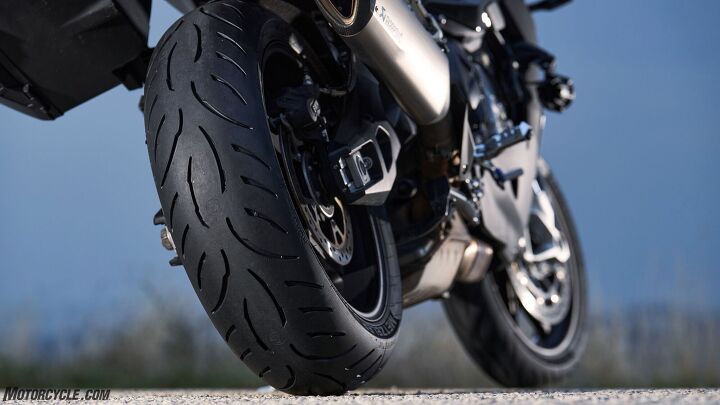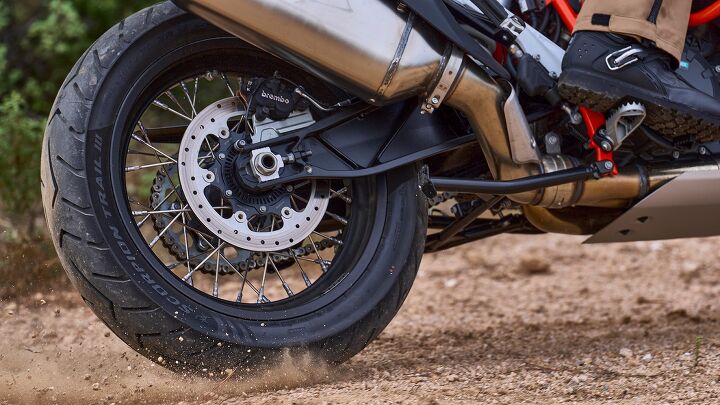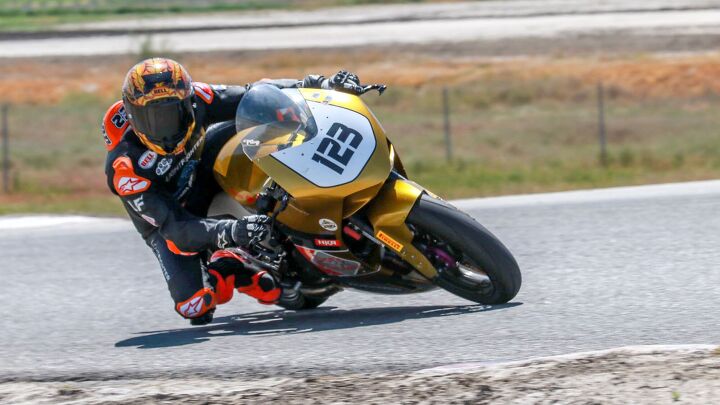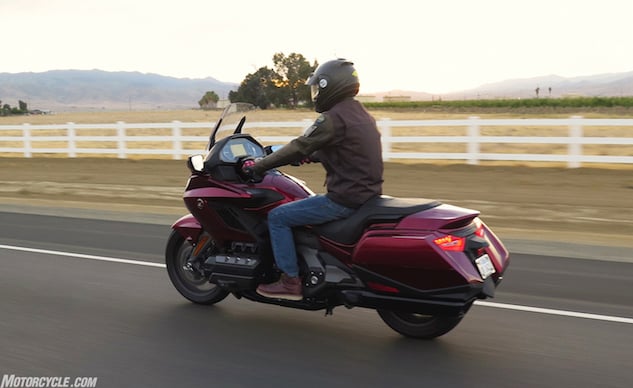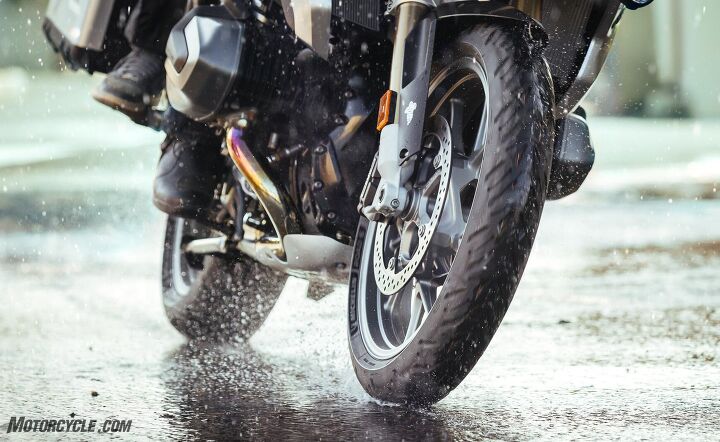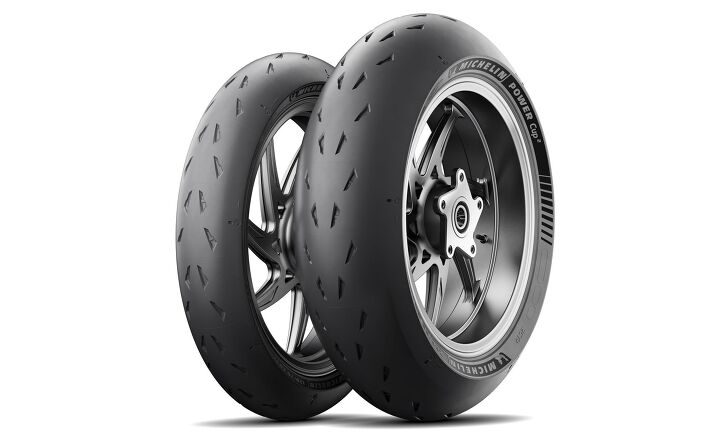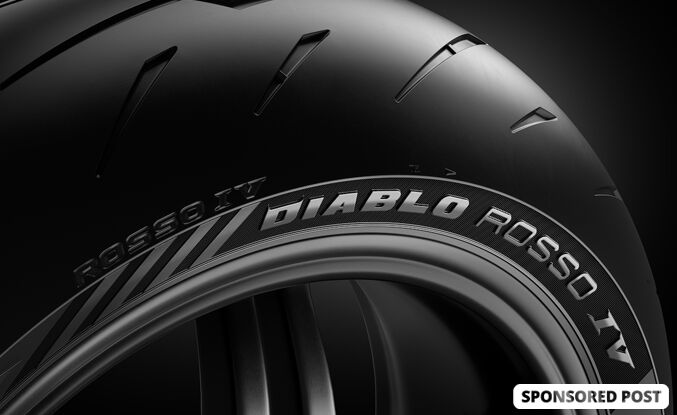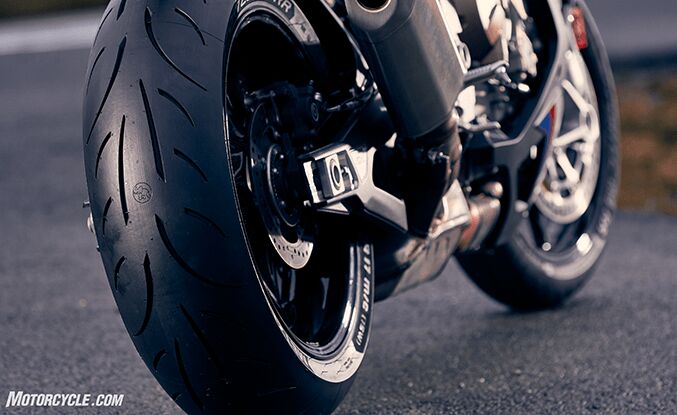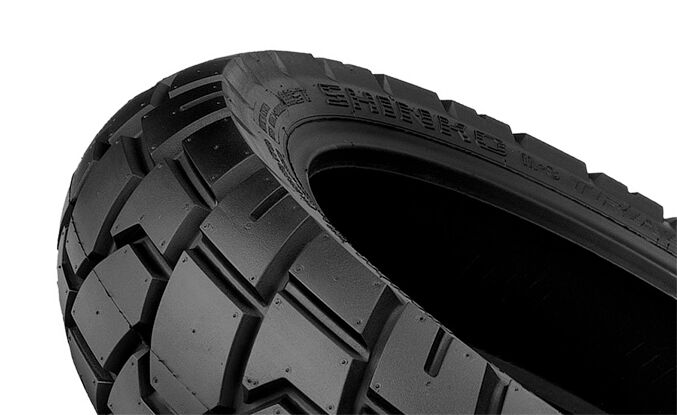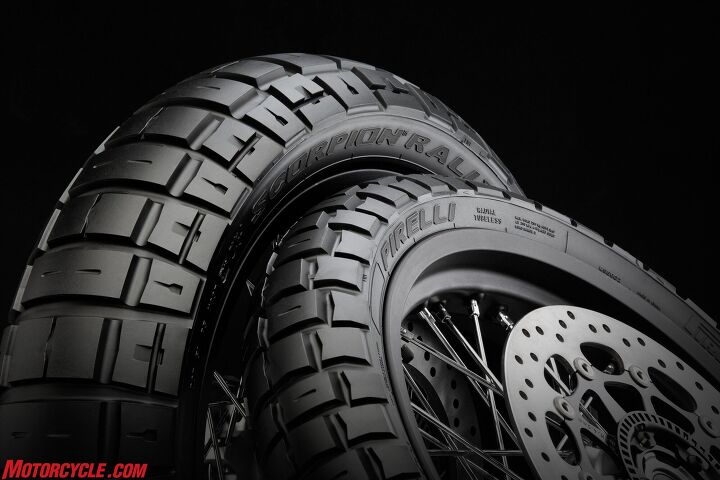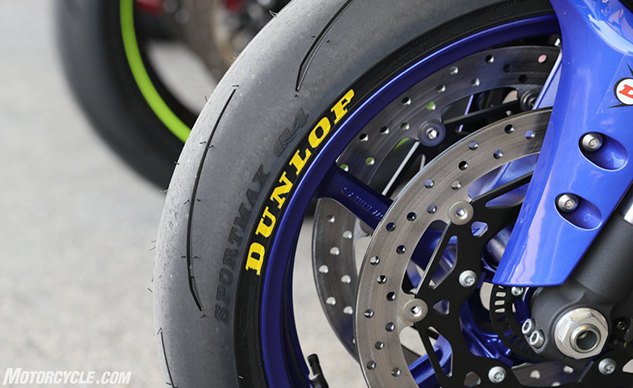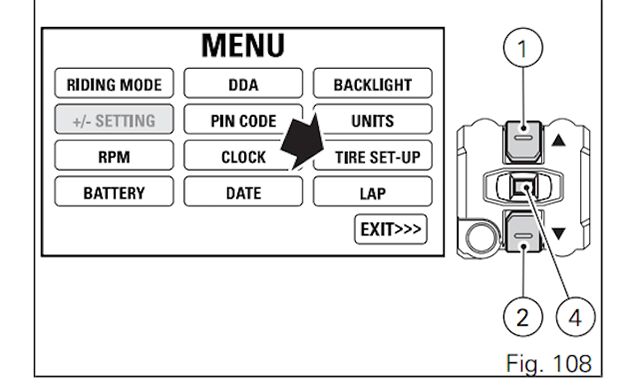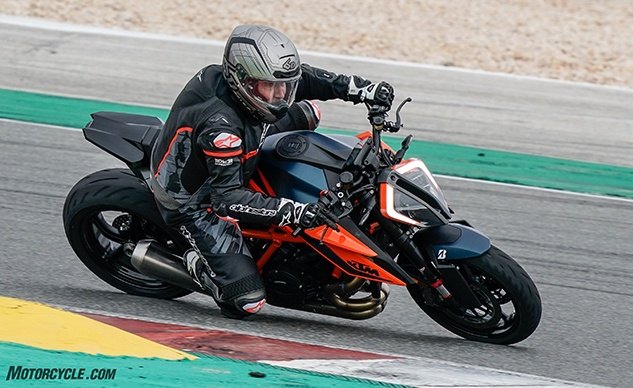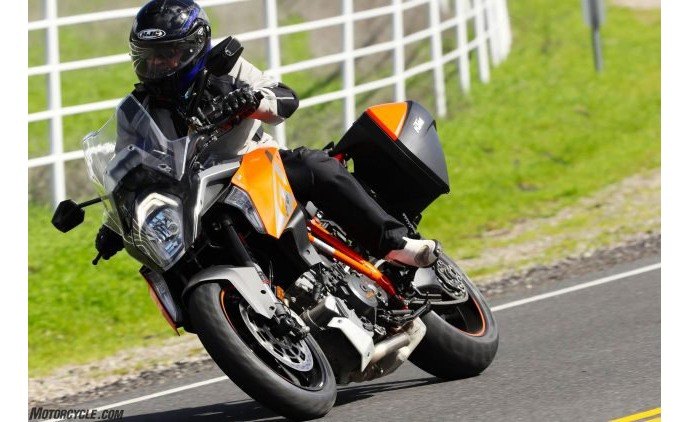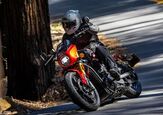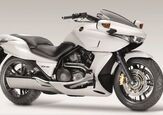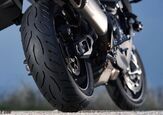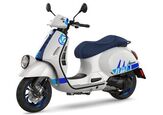#Tires
Metzeler Roadtec 02 Tire Review
Designing a sport-touring tire must be one of the hardest challenges in motorcycling. In a way, you’re asking for it all. The sport-touring customer wants a tire that offers handling like a sportbike, but with the mileage of a touring bike. And let’s not forget, wet performance is of the utmost importance. Is it possible to have your cake and eat it, too?
Pirelli Launches SCORPION Trail III Adventure Tire
Pirelli SCORPION Trail III tires are now available at retailers, bringing a new advanced performance option for adventure-touring motorcycles. The third-generation SCORPION Trail is mainly intended for paved roads while also more than capable of tackling dirt routes, able to handle various riding conditions.
Putting Dunlop’s Q5 Trackday Tire Through The Ultimate Test
When Dunlop released the Sportmax Q5, and its Q5S sister tire, I was skeptical. To get straight to the point, I wasn’t a big fan of the previous Q4 tire. Yes it warmed up quickly, but it also wore quickly and didn’t have enough edge grip to feel confident on the throttle on a powerful 1000cc-plus bike. Dunlop addressed a lot of the Q4’s shortcomings with the Q5, and after a day sampling the Q5 and Q5S, I came away impressed with the new tire. But that was just an initial impression. I was still skeptical about the tire over the long haul. How quickly does it wear? How does it behave once it’s worn? How much life can I really expect out of these tires? And are they really worth it?
Best Motorcycle Touring Tires for Going Further
Pity the poor fool who’s got nothing to do for a week or two but roll around on his motorcycle – no job, no cares, no particular place to be. And if you’re fortunate enough to have all those things working in your favor, chances are you’re carrying around quite a bit of loot in the saddlebags and trunk of your Goldwing, Ultra Glide or big BMW K-bike – possibly even an accomplice. What you want on all of those bikes are tires that stick to the pavement, wet or dry, upright or dragging peg, carry a heavy load safely, and preferably wear like iron. Is that too much to ask?
MO Tested: Michelin Road 6 Tire Review
While magazine editors and track riders may wax poetic about the leaps in performance of the latest super-grippy sport and track tires, the vast majority of sport-focused street riders spend their money on sport-touring rubber. Why? Well, two reasons, actually. First, once you look beyond the arid Southwest where the bulk of the U.S. motorcycle industry resides, riders have to deal with rain, making the way tires handle in the wet of great importance. Then there’s the fact that sport-touring tires offer almost the same level of grip as their sportier siblings – at street temperatures – while offering significantly better longevity. (At lower temperatures, sport-touring tires can offer more real-world grip than even the stickiest of sporting rubber, which are designed to work their best at elevated temperatures.) With the release of the Michelin Road 6 sport-touring tires, Michelin claim an increase in both wet grip and wear characteristics when compared to their precursors, the Michelin Road 5.
MO (Track) Tested: Michelin Power Cup 2 Tires
Tire manufacturers are getting bold these days, pumping out tires that barely pass the bar for what counts as street legal. Take the Michelin Power Cup 2, for example. If it weren’t for the scant traces of tread marks down the middle, you could easily mistake these tires for a racing slick. And with a 5% void ratio, clearly, that’s the point. Michelin also goes so far as to outright claim the Power Cup 2 as a 90/10 tire – that is, it’s made to spend 90% of its time on track and 10% on the street. The slight tread profile proves just enough for the Department of Transportation to deem it legal for use on public roads. With that endorsement, KTM – you know, being “Ready To Race” and all – have even found it fitting to slap the Power Cup 2 tires on the 890 Duke R – stock!
The Pirelli Diablo Shows How Racing Improves The Breed
Pirelli recently introduced the Diablo Rosso IV, the fourth generation of the popular tire intended for spirited road riders who also may find themselves attending the odd trackday here or there. By now, sport riders all over the world are likely familiar with the name Diablo – and they are certainly familiar with the name Pirelli – but that all had to start somewhere.
Black Magic: Motorcycle Tires
As motorcyclists, we are well aware of how important tires are. Our ride – even our survival – depends on just a few square inches of rubber. So, why is it that rarely does a week go by in which we don’t see a motorcycle out on the road with visibly under-inflated tires? These are tires that are way past the point of affecting handling and into the zone of being dangerous. Perhaps it’s because tire technology has advanced so much in recent decades that we take them for granted. It used to be that one of the easiest upgrades you could make to your bike – particularly for sport-focused riders – was getting rid of the OEM tires and spooning on some aftermarket rubber. Now, street tires can offer grip that would surprise racers from a decade ago while still delivering reasonable mileage. Additionally, less performance-oriented tires are now capable of considerably more wet-weather grip and durability, a real boon to commuters and touring riders.
Shinko Motorcycle Tires: Everything You Need to Know
Shinko isn’t as well-recognized a motorcycle tire brand as the likes of Michelin, Bridgestone, Pirelli or Dunlop. Part of that is because the company is relatively new to the game. The Shinko Group was founded in Japan in 1946, producing bicycle tires and tubes as the country emerged from the Second World War. Shinko didn’t really get into motorcycles, however, until 1998, when it acquired the tire technology and molds from Yokohama.
Pirelli Motorcycle Tires: Everything You Need To Know
Founded in 1872 by Giovanni Battista Pirelli, the company we now know for its expansive range of tires got its humble beginnings in a different industry: telecomms. Back then several new technologies and industries were emerging, including energy and telecommunications. Throughout Europe, kilometers upon kilometers of power cables and phone lines were being put into the ground and into the ocean. All of them needed protection. Enter Pirelli and his expertise in another emerging field: rubber. Pirelli founded a limited partnership, “G.B. Pirelli & C.”, in Milan to produce elastic rubber items – primarily sheathing to protect all these wires buried in the ground. According to Pirelli’s corporate history website, by 1873, only a year after its foundation, Pirelli already had a plant in Milan. Production of carriage bands (they weren’t exactly tires) started in 1885, and by 1894 the first velocipede tire was born.
Best Motorcycle Racing Tires You Can Also Use On The Street
In our Best Sportbike Tire series, we compiled a list of sportbike tires primarily suited for spirited street riding. In this, our Best Motorcycle Racing Tires series, we’re catering to the hardcore track rider, or even club racer, who still fancies the odd street ride. If you fall in that category, this list is for you. Here we’ve compiled some of the best track rubber you can find while still being approved by the Department of Transportation. In case you didn’t get the subtle hint, you won’t find any slicks on this list, but what we have here are nearly as good. As with many things in life, there’s a catch – some of these tires you’ll have to get through your local track vendor and can’t necessarily buy online. To put a positive spin on this scenario, at least you can feel good knowing you’re supporting a local business. Better still, your local track vendor will have the best advice as to what tire pressures to set for your local riding areas. Where possible, we’ve linked to Motorcycle.com staff member reviews of said tire(s), so here they are.
MO Tested: No-Mar Classic HD Motorcycle Tire Changer Review
As motorcycles become more reliable and maintenance intervals get more spread out, one consumable remains on a fairly frequent interval for motorcycles. Tires have made tremendous advances in the last decade, but they are still the most frequent maintenance items for motorcyclists. With the rates for mounting and balancing tires going through the roof (My local shop charges $60 for a pair of tires with the wheels off the bike.), buying a tire changer makes a lot of sense. I’d been eyeing No-Mar Tire Changers for quite a while before pulling the trigger and installing one in my garage. In less than a month and after changing a dozen tires, we’d have already spent about 35% of the cost of the No-Mar Classic HD Motorcycle Tire Changer at our local motorcycle shop, but what’s most important is how convenient it is having a tire changer in my garage available when I need it. I no longer have to load my wheels into my truck, drive to my local shop, wait an hour (or more) for them to be ready, and finally take them home to reinstall on my bike.
The Benefits Of Trail Braking
The internet is full of riding advice, isn’t it? Do this. Do that. Hang off. Knee down. Elbow out(!). You get the picture. Now, allow me to add my two cents to the armchair debate, on the subject that’s arguably the most controversial among internet rider coaches everywhere – whether or not to trail brake. The short answer is yes, you should be trailing the brakes. But we’ll get to the reasons why in just a moment.
MO Tested: Dunlop Roadsmart III Long Term Review
If you’re making a tire in the sport-touring category, you probably have one of the most difficult jobs in the entire tire business. Where racers want the grippiest tire they can find, longevity be damned, and the touring set seek high-mileage with modest grip, the sport-touring crowd wants the best of both worlds. Oh, and it better have good wet weather performance, too. No easy feat.



